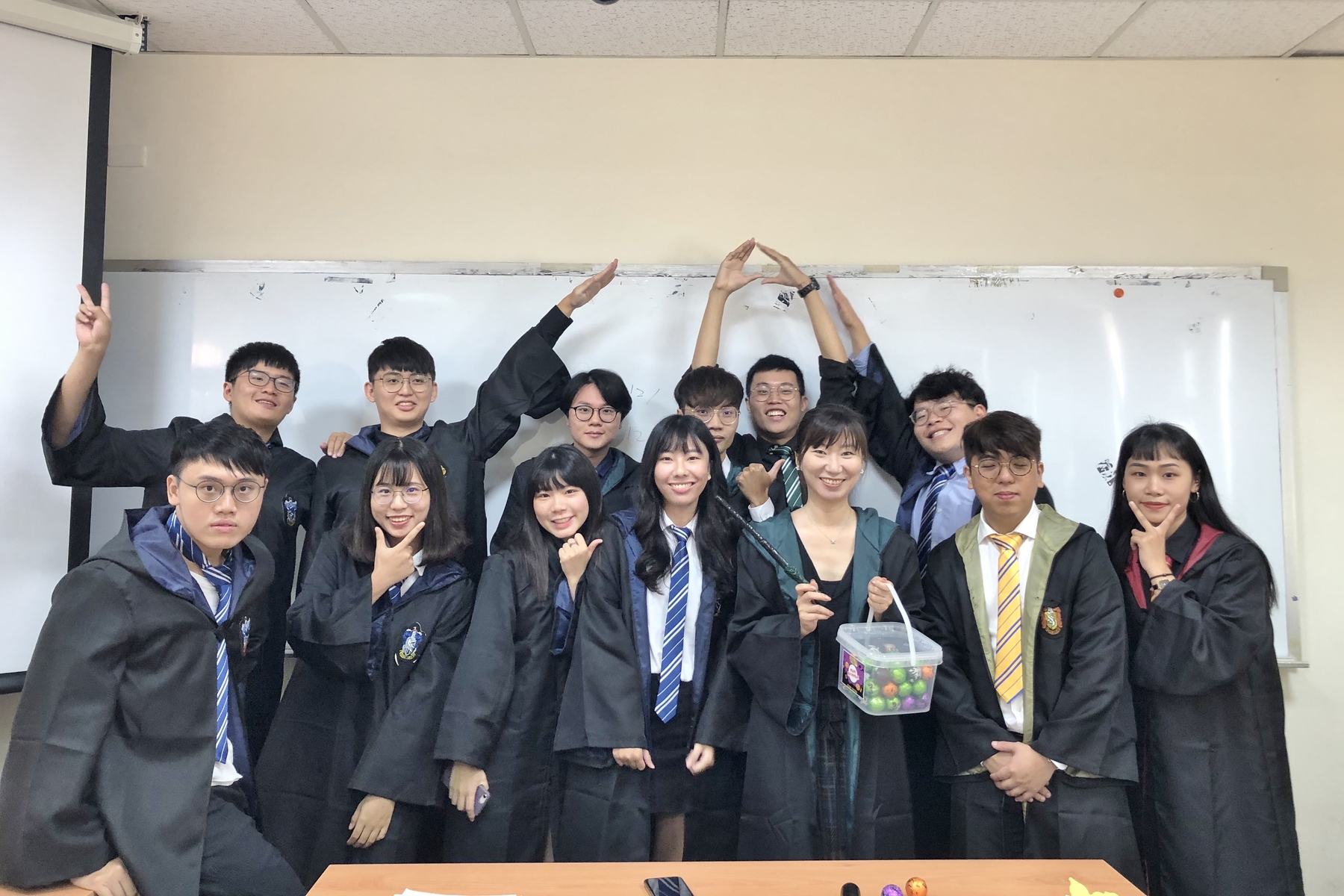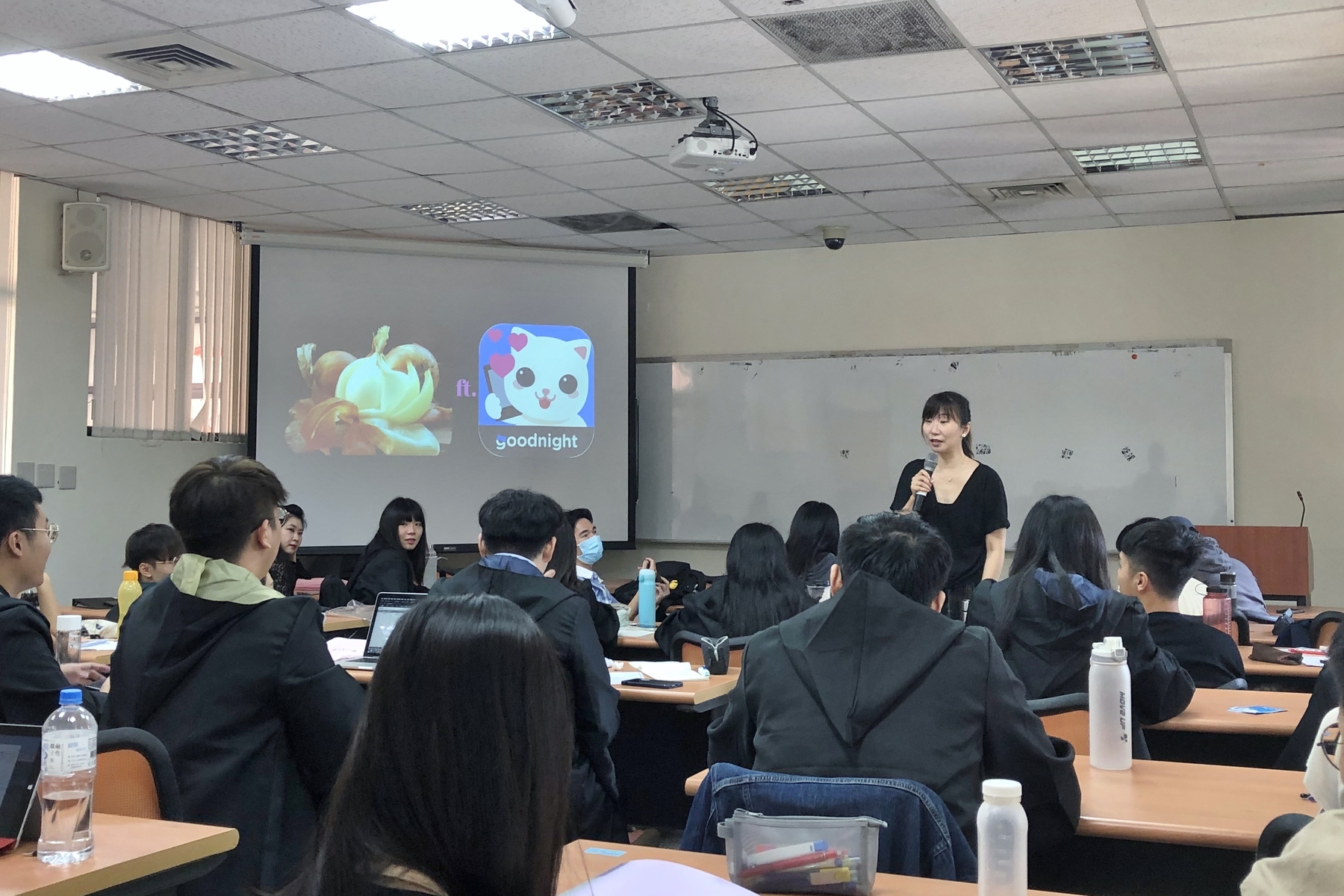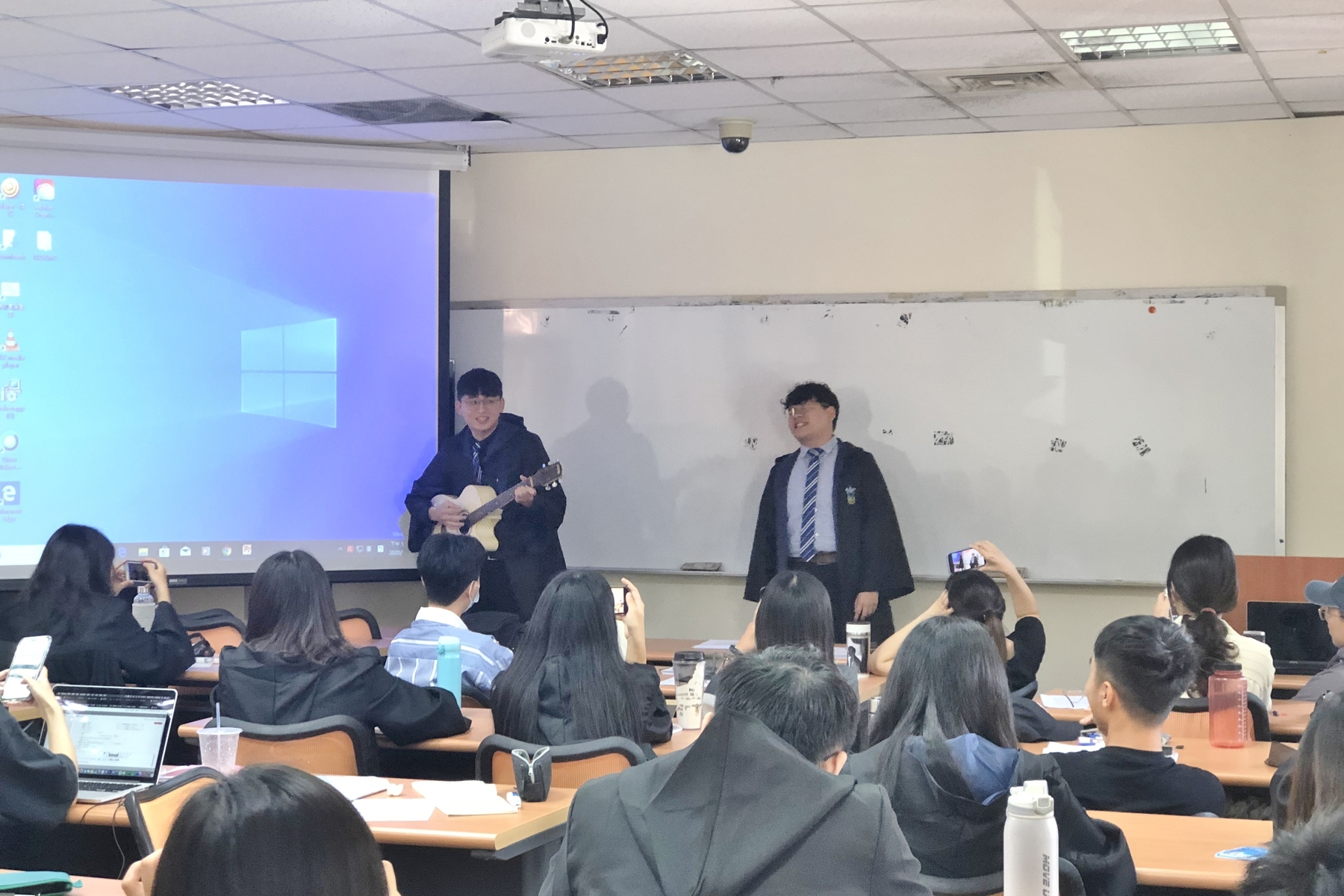Students explore differences in online and offline social interactions with Professor Shao-Jung Wang



2021-02-01
(Provided by College of Management) In the information age, when many people are obsessed with social media, how different are we online and offline? Professor Shao-Jung Wang of the Institute of Marketing Communications at NSYSU started a course on Computer-Mediated Communication to explore the differences in social interactions online and in the real world. The course is based on the perspective of communication and social psychology and analyzes individual self-awareness; it considers the interaction between an individual and a group and explores the nature of computer-mediated communication, interaction relations, and behavior models through new communication phenomena to understand how an individual's features are influenced by computer-mediated interactions.
Every lesson of the Computer-Mediated Communication course focuses on a different theoretical topic and includes students’ discussion. Professor Wang uses real-life examples to explain how to apply theories, for example, what message do photographs on Instagram really want to communicate and if true friendship and love do exist in the virtual world. This teaching method lets students understand the seemingly rigid theories in a lively and relaxed way.
Besides the teacher’s explanation, the students present reports in class one by one every week to help others understand specific theories. For example, the group working on self-disclosure started with a psychological test to attract students’ attention and introduced the theory in different contexts, its applications, research results, and models. Their report also took the COVID-19 situation into account to explain how computer-mediated communication affects people's self-disclosure on social media, and a video illustrating how people maintain social relations online during the pandemic, to then let the students discuss related everyday situations. Previously, some students played and sang the song “Onion”, comparing self-disclosure to an onion, that is peeled layer by layer. At the end of the semester, the students make a presentation on how to connect real life with computer-mediated communication in various contexts: from love, friendship, and intimacy to the workplace, marketing, and video games. In the past, the students completed the task by organizing a talk show presenting various situations in online and offline friendships.
A student of the Institute of Marketing Communications Sheng-Ting Ho said that by studying the course, one can learn about the nature of computer-mediated communication between people, interaction, and behavioral patterns online and offline and that the instructor's humorous teaching style helped students understand social interactions and communication patterns online and in the real world. A master student, Chan-Lun Yang said that the selling point of the course is “interaction” and that the issues taught in class are easy and closely related to life, so the students are not afraid to raise their hands and speak, which was also an opportunity to listen to creative answers of their peers. Professor Wang elaborated on students’ answers during class and provided insights, and then linked the answers to theories so that the students found out that everything in life has a theoretical explanation.
(Edited by Public Affairs Division)
(Provided by College of Management) In the information age, when many people are obsessed with social media, how different are we online and offline? Professor Shao-Jung Wang of the Institute of Marketing Communications at NSYSU started a course on Computer-Mediated Communication to explore the differences in social interactions online and in the real world. The course is based on the perspective of communication and social psychology and analyzes individual self-awareness; it considers the interaction between an individual and a group and explores the nature of computer-mediated communication, interaction relations, and behavior models through new communication phenomena to understand how an individual's features are influenced by computer-mediated interactions.
Every lesson of the Computer-Mediated Communication course focuses on a different theoretical topic and includes students’ discussion. Professor Wang uses real-life examples to explain how to apply theories, for example, what message do photographs on Instagram really want to communicate and if true friendship and love do exist in the virtual world. This teaching method lets students understand the seemingly rigid theories in a lively and relaxed way.
Besides the teacher’s explanation, the students present reports in class one by one every week to help others understand specific theories. For example, the group working on self-disclosure started with a psychological test to attract students’ attention and introduced the theory in different contexts, its applications, research results, and models. Their report also took the COVID-19 situation into account to explain how computer-mediated communication affects people's self-disclosure on social media, and a video illustrating how people maintain social relations online during the pandemic, to then let the students discuss related everyday situations. Previously, some students played and sang the song “Onion”, comparing self-disclosure to an onion, that is peeled layer by layer. At the end of the semester, the students make a presentation on how to connect real life with computer-mediated communication in various contexts: from love, friendship, and intimacy to the workplace, marketing, and video games. In the past, the students completed the task by organizing a talk show presenting various situations in online and offline friendships.
A student of the Institute of Marketing Communications Sheng-Ting Ho said that by studying the course, one can learn about the nature of computer-mediated communication between people, interaction, and behavioral patterns online and offline and that the instructor's humorous teaching style helped students understand social interactions and communication patterns online and in the real world. A master student, Chan-Lun Yang said that the selling point of the course is “interaction” and that the issues taught in class are easy and closely related to life, so the students are not afraid to raise their hands and speak, which was also an opportunity to listen to creative answers of their peers. Professor Wang elaborated on students’ answers during class and provided insights, and then linked the answers to theories so that the students found out that everything in life has a theoretical explanation.
(Edited by Public Affairs Division)
Click Num:
Share
